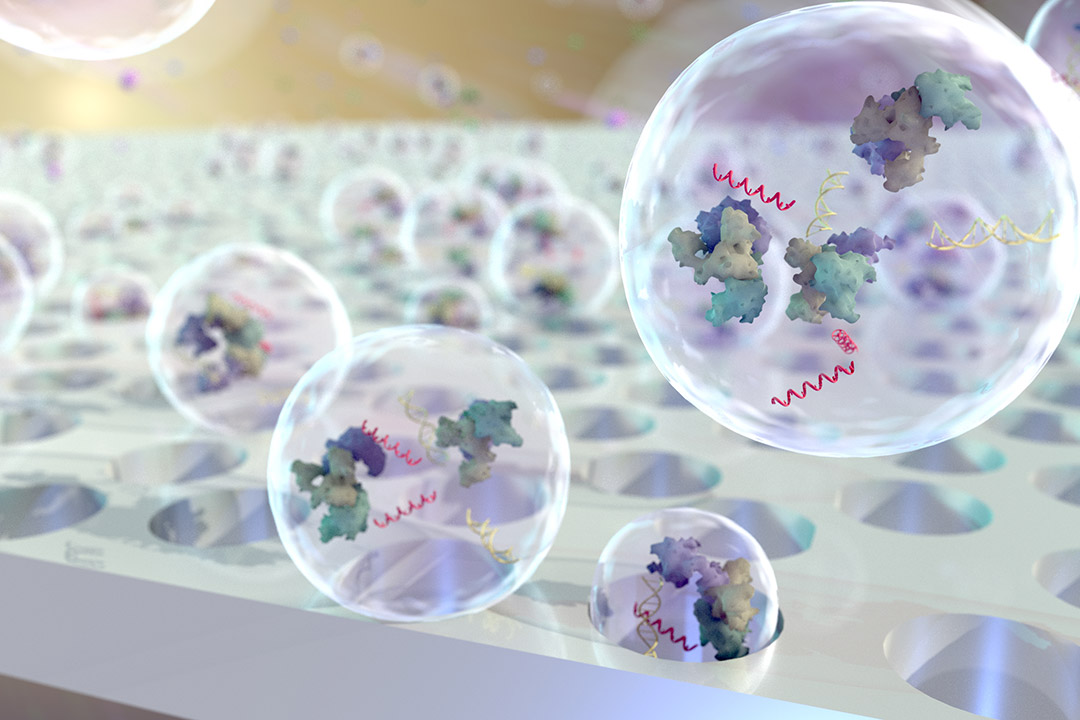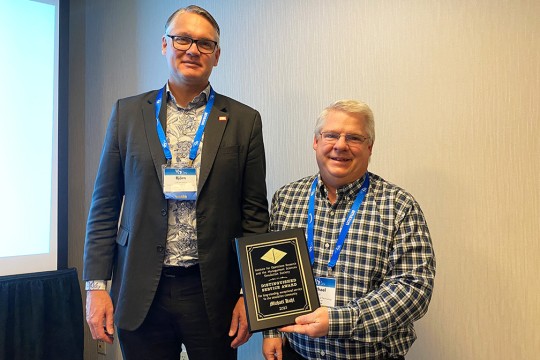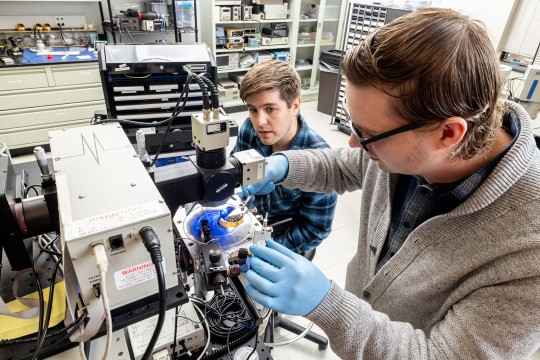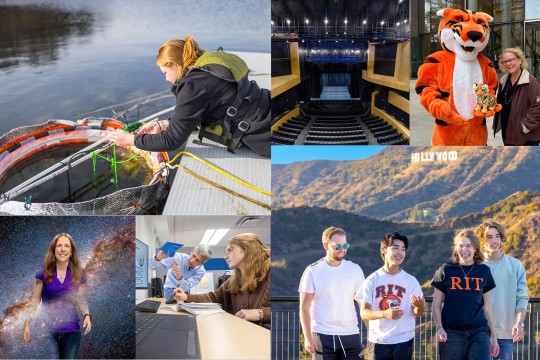Researchers develop new method to filter extracellular vesicles to improve diagnostics options
Using improved ultra-thin nanomembranes, researchers can learn more about cellular communication
This artist’s rendering shows the new nano-membrane filter technique developed by biomedical engineering researchers from RIT and the University of Rochester.
Researchers at Rochester Institute of Technology and the University of Rochester discovered an alternative to successfully purify biological particles to better understand how cells communicate with one another.
The teams collaborated on work to better understand extracellular vesticles (EV). All cell types in the body release EVs for intercellular communication by exchanging proteins, RNA, DNA and lipids. There is a growing interest in EVs as a platform for liquid biopsy techniques. New technologies and science discoveries at the nano-scale—such as extracellular vesicles—might enable new ways of improving diagnostics and health care. Purification of EVs is the first step in exploring the therapeutic and diagnostic potential of EVs, said faculty-researcher Thomas Gaborski.
Elizabeth Lamark
Thomas Gaborski, associate professor of biomedical engineering, is working on purifying biological particles to better understand how cells communicate with one another.
“Our work in the past has been on making tissue barrier models, or tissue-on-chip models, using our ultrathin nanomembranes,” said Gaborski, associate professor of biomedical engineering in RIT’s Kate Gleason College of Engineering. “This work is a little different. What we’re doing is using membranes to collect and purify extracellular vesicles, small lipid vesicles that are secreted by cells, to help them communicate. People are excited about extracellular vesicles because they’ll help us understand how cells talk to each other inside the body. This is a novel method to help us understand biological and physiological processes.”
The teams at RIT and UR collaborated to develop a technique called Tangential Flow for Analyte Capture (TFAC) that uses ultra-thin, nano-membranes to better collect and purify extracellular vesicles from biofluids. Understanding the important functions of these tiny but powerful communicators, extracellular vesicles can provide information about the biological and physiological processes taking place in the body.
The research was recently published in the journal Advanced Materials Technologies. Gaborski and RIT doctoral student Mehdi (Aslan) Dehghani worked with UR professor of biomedical engineering James McGrath, research scientist Jonathan Flax and doctoral student Kilean Lucas on developing this new purification technique.
Using the Tangential Flow for Analyte Capture Technique
The TFAC filtration-based system is a low-pressure process reducing the possibility of damaging EVs. TFAC also leads to purification of EVs with minimal contaminations, suggesting promising potentials of this technique for high purity EV samples, said Dehghani, a microsystems engineering Ph.D. candidate working in Gaborski’s NanoBio Device Laboratory. His work with the research team involved comparing the performance of the ultrathin nano-membranes that consist of novel materials such as silicon and silicon nitride with conventional polymeric membranes.
To better understand the biological roles of extracellular vesicles and to fully utilize them as therapeutic and diagnostic tools, they first need to be purified. There is no gold standard technique for purification of EVs, and all the available techniques have their own advantages and limitations, Dehghani explained.
“There are other available techniques for purifying EVs such as ultra-centrifugation, which is the most common technique,” he said. “But there are different concerns such as the low yield and limited throughput. One of the other concerns is contamination or co-purification of particles that are not actually EVs. Additionally, some of these techniques could potentially damage the particles, and EVs might not be intact with preserved biological functions any more after purification.”
“We have shown the advantages of our membranes over conventional membranes in purification of nanoparticles such as EVs, but we are also working with our collaborators at the University of Rochester to optimize this system,” he said.
Gaborski agreed. “What we are bringing to the table is a new, better and more efficient filter than any that has been used in this space before. We can actually do different and better types of separations more efficiently. We are the new materials creators, and our work with novel membranes and materials to enable partners and collaborators to build systems around the membrane.”
Read More
The advantages of working differently: RIT Ph.D. candidate Mehdi (Aslan) Dehghani secured an internship at bio-device company after his team's research paper was published nationally. Read the story.







